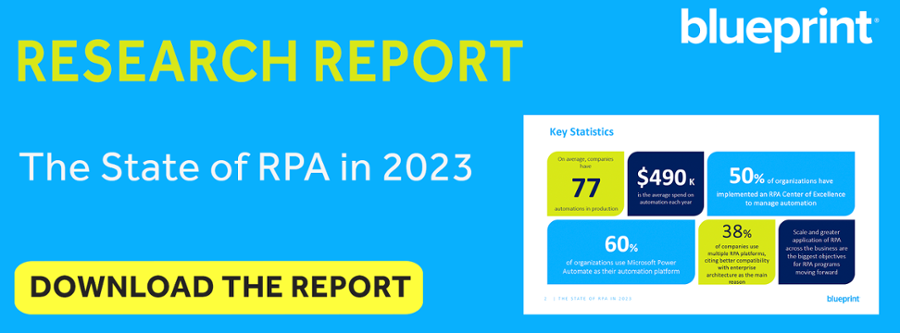The Size of RPA Toolchains in 2023
As RPA (robotic process automation) programs have matured, so too have the toolchains that run them. RPA toolchains refer to all the pieces of software an automation practice needs to identify, design, deliver, and monitor automated processes.
An RPA platform itself is typically the tool where automations are designed, developed, deployed, and monitored, however that’s only one part of a bigger picture that makes up RPA toolchains.
Organizations realized early on that RPA platforms weren’t enough to successfully deliver and scale automation. Automation needed to be supplemented with other technologies like process discovery tools. A major objective of Blueprint’s annual research into the state of RPA was understanding how big RPA toolchains are and what technologies companies are investing in. Here’s what we found.
The Average Size of RPA Toolchains
When Blueprint surveyed 500 RPA leaders from North America and Europe, companies reported that they have five tools in their RPA toolchains on average.
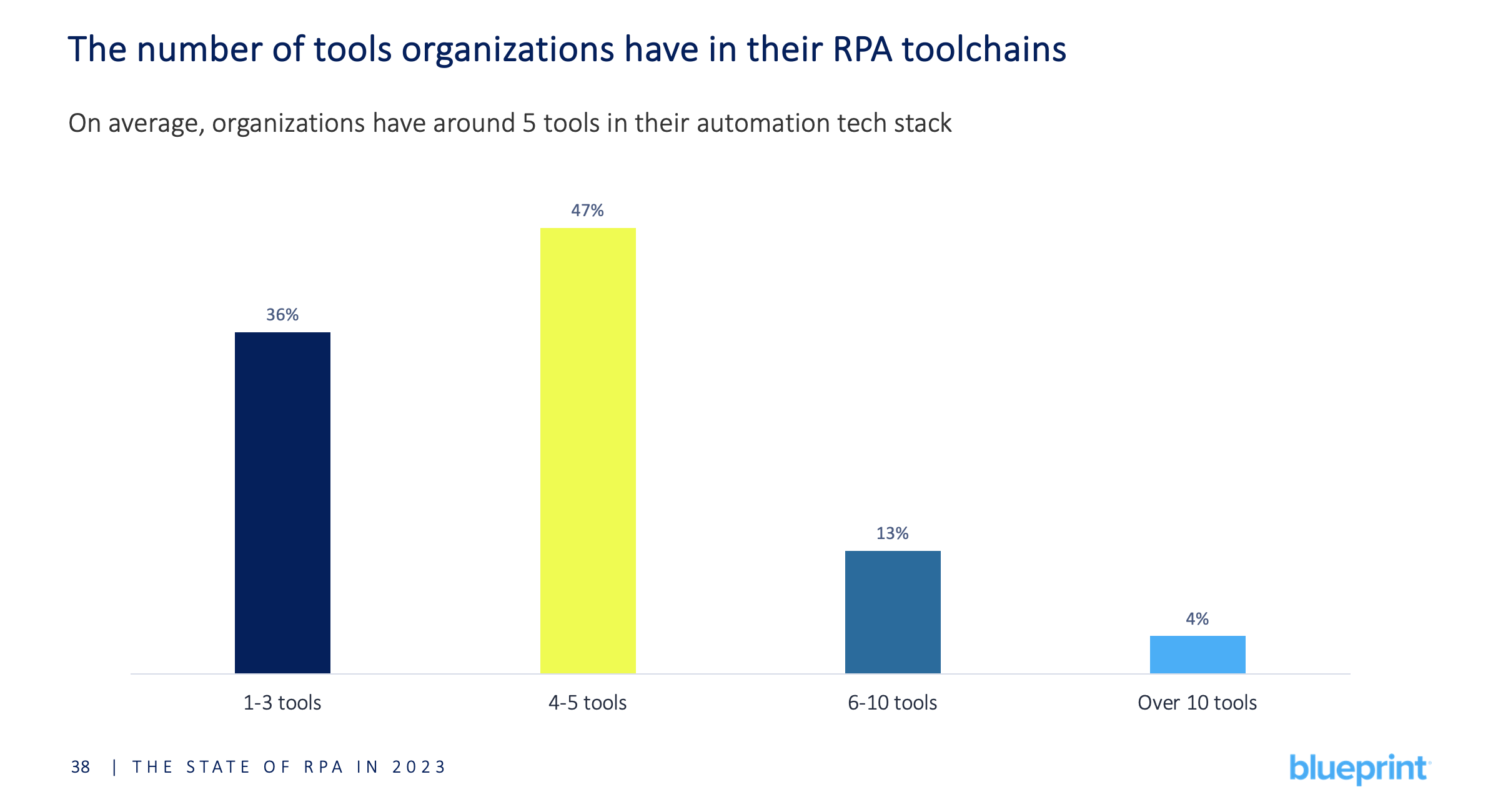
The range of tools in the average RPA toolchain can be boiled down to but not limited to the following:
- RPA platforms to design, deliver, and monitor automated processes
- ALM tools like Jira to manage the work being done
- A mix of process discovery tools like process capture, task mining, and process mining tools.
In the research that we performed, Blueprint also wanted to get a better idea of what kind and how many process discovery tools organizations were using.
The Process Discovery Tools Organizations Use in their RPA Toolchains
Process discovery tools are a key component of any RPA toolchain. They enable automation programs to define their business processes and then identify viable and high-value automation candidates.
Process discovery is the umbrella term that defines a range of tools. Within that category sit process capture, task mining, and process mining tools.
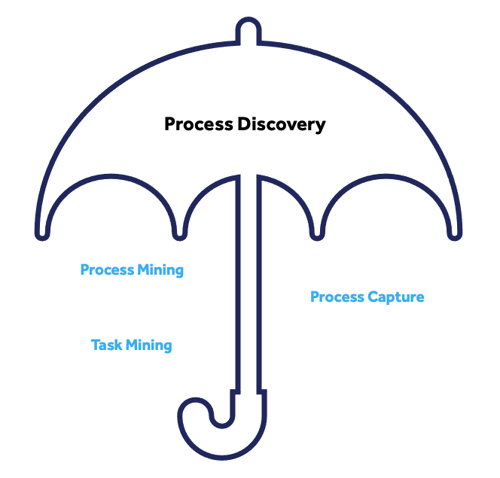
Process capture is a technology that enables organizations to discover, understand, and analyze the tasks employees perform as they relate to completing larger processes. It works by monitoring the actions users take. A recorder is installed on an employee’s computer and manually triggered to capture their interactions in the different applications they use, recording data like keystrokes, clicks, data entry, etc., to uncover how tasks are completed within the organization.
Task mining and process mining are similar. They’re technology that investigate the mountains of data in a business’s event logs to discover and present end-to-end processes and tasks that the company is performing to complete work. Event logs are the banks of data that store different information like logins to software in the enterprise tech stack, interactions in that software, logoffs, etc.
Many RPA vendors have bundled process discovery technologies into their offering. A great example is Microsoft Power Automate Process Mining that mines an organization’s event logs to identify business processes. Power Automate Process Mining also uses AI to present recommendations on how to improve those processes and which ones should be automated with Power Automate.
The majority of Blueprint’s survey respondents reported that they use a variety of process discovery tools.
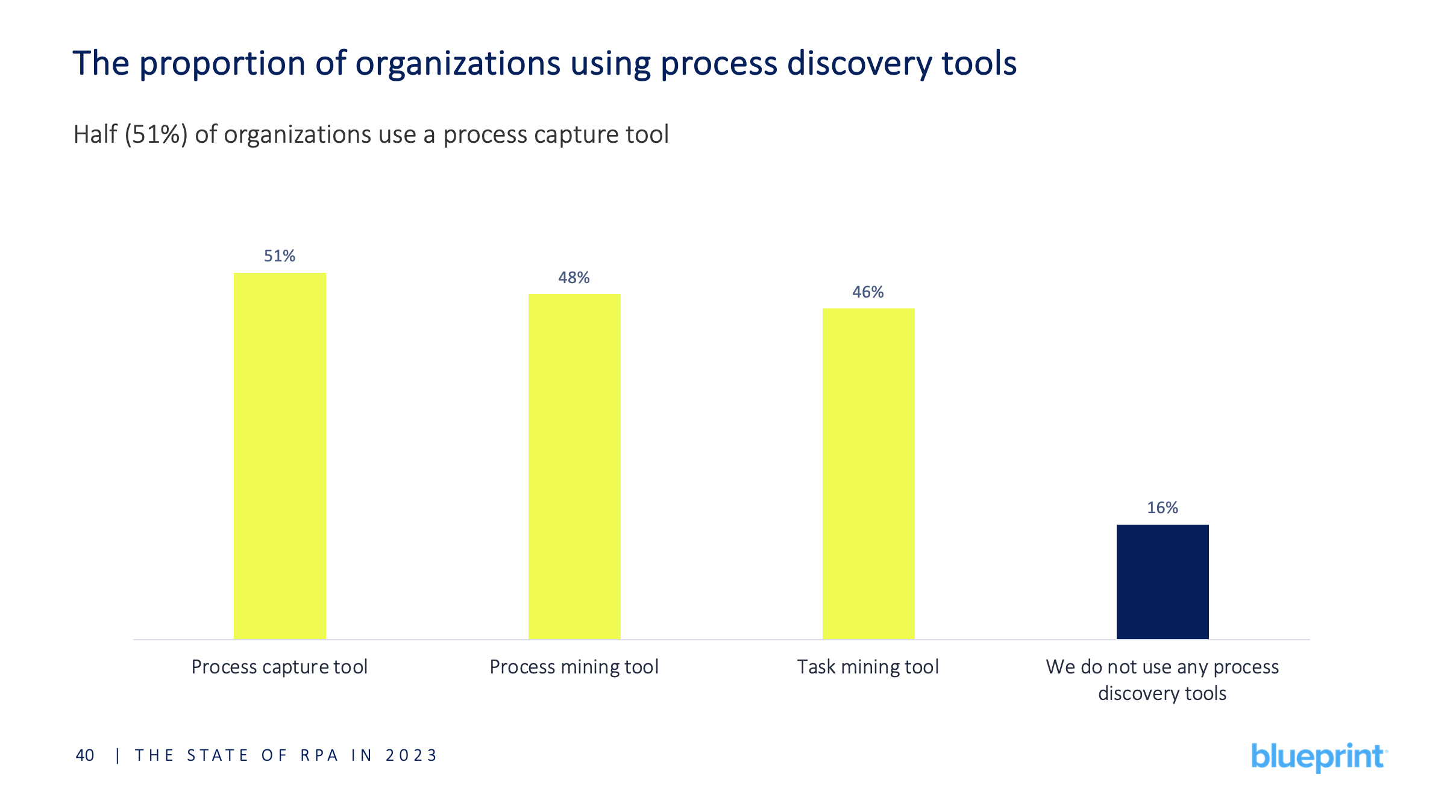
51% reported that they use a process capture tool. 48% stated they employ a process mining tool, and 46% confirmed that a task mining tool is used in their RPA toolchain.
Only 16% reported that they did not use any process discovery tools, suggesting organizations are seeing justifiable returns and results by augmenting their automation practice with these different technologies.
Conclusion
As automation programs have evolved, they have assembled RPA toolchains that enable them to scale and increase the quality of automation identification, design, management, and delivery.
On average, automation practices have five tools in their RPA toolchain which may include a combination of an RPA platform, an ALM tool, and various process discovery tools.
The use of process discovery tools like process capture, process mining, and task mining is very common, providing evidence that they are certainly helping organizations to better identify and prioritize automation candidates for scale.
For all the insight and discovery Blueprint’s most recent research delivers, download your very own copy of The State of RPA in 2023 Research Report now!
Share this
Recent Stories

What is Microsoft Power Automate Process Mining?
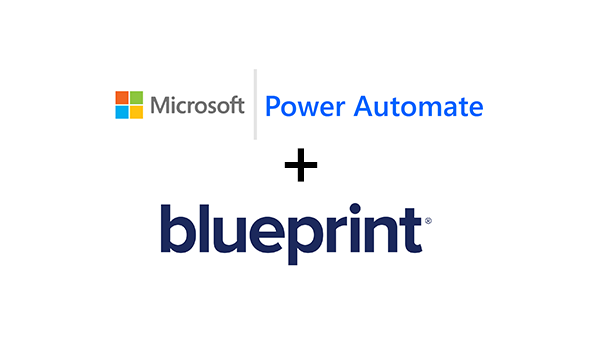
Blueprint partners with Microsoft to unlock the full potential of new RPA desktop solution, Power Automate


